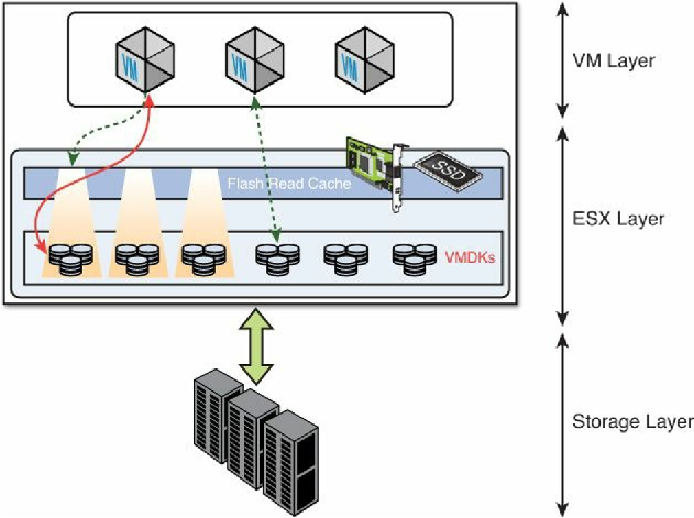Database Reference
In-Depth Information
architecture.
Figure 6.39
vFRC architecture overview.
The types of SQL workloads that will benefit from vFRC are read-dominated OLTP-
type systems and read-dominated data warehouse queries. The ideal workload has a
high repeated access of data—for example, 20% active working set that is referred to
80% of the time.
The major determinants of performance are the cache size, the cache block size, and the
type of flash device used (SSD vs. PCIe). In terms of cache sizing, it is important to
ensure that the cache is big enough to cover the active working set without being too big
that you're wasting the valuable flash resource. The cache block size should be equal to
the dominant IO size of the VMDK; for SQL, this will be predominantly between 8KB
and 64KB. If you are unsure of the main IO size for your database, you can use
vscsiStats for a period of time to record the IO profile. To learn more about vscsiStats,
The type of flash device used will have an impact on the overall IOPS and latencies you
can achieve. Although SATA and SAS SSDs are cheaper, they do not offer the same
performance as PCIe. The right device for your environment will depend on your
workload, performance, and budgetary requirements.


